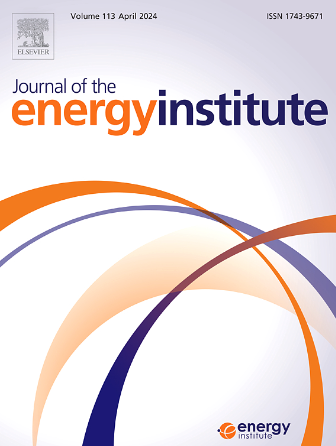A generalized neural network for accurate estimation of soot temperature in laminar flames using a single RGB image
IF 5.6
2区 工程技术
Q2 ENERGY & FUELS
引用次数: 0
Abstract
Soot temperature is a relevant factor related to the efficiency of combustion processes. Artificial neural networks have started to be used to estimate soot temperature distributions in laminar flames by analyzing images captured with optical setup of varying complexity. These networks often achieve greater accuracy and precision than traditional methods that rely on explicit theoretical models and numerical approaches. However, most prior studies validate the neural networks on limited subsets of canonical flames, which may lead to overfitting. For these methods to be practically useful, a trained network should generalize across diverse flame conditions without needing retraining.
This paper introduces the use of Attention U-Net models for soot pyrometry, utilizing only broadband flame emission images captured with a RGB camera. Simulation results demonstrate that the Attention U-Net achieves more accurate temperature estimations compared to previously reported learning-based methods. Additionally, we evaluate the model’s generalization capabilities, showing that a network trained on simulated data maintains high accuracy when applied to images of laminar flames across various experimental conditions with errors below 30 K. Tests with experimental data further reveal that the proposed approach, using a single , produces temperature estimates comparable to those obtained through well-established techniques that require more complex equipment and processing. Moreover, the network exhibits strong robustness to measurement noise and remains effective in flames with low soot loading, where traditional reference techniques suffer from reduced signal-to-noise ratios and diminished accuracy.
求助全文
约1分钟内获得全文
求助全文
来源期刊

Journal of The Energy Institute
工程技术-能源与燃料
CiteScore
10.60
自引率
5.30%
发文量
166
审稿时长
16 days
期刊介绍:
The Journal of the Energy Institute provides peer reviewed coverage of original high quality research on energy, engineering and technology.The coverage is broad and the main areas of interest include:
Combustion engineering and associated technologies; process heating; power generation; engines and propulsion; emissions and environmental pollution control; clean coal technologies; carbon abatement technologies
Emissions and environmental pollution control; safety and hazards;
Clean coal technologies; carbon abatement technologies, including carbon capture and storage, CCS;
Petroleum engineering and fuel quality, including storage and transport
Alternative energy sources; biomass utilisation and biomass conversion technologies; energy from waste, incineration and recycling
Energy conversion, energy recovery and energy efficiency; space heating, fuel cells, heat pumps and cooling systems
Energy storage
The journal''s coverage reflects changes in energy technology that result from the transition to more efficient energy production and end use together with reduced carbon emission.
 求助内容:
求助内容: 应助结果提醒方式:
应助结果提醒方式:


